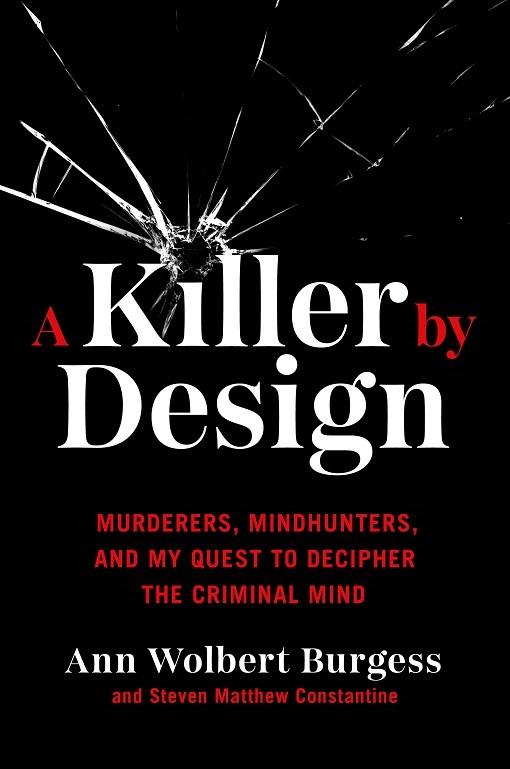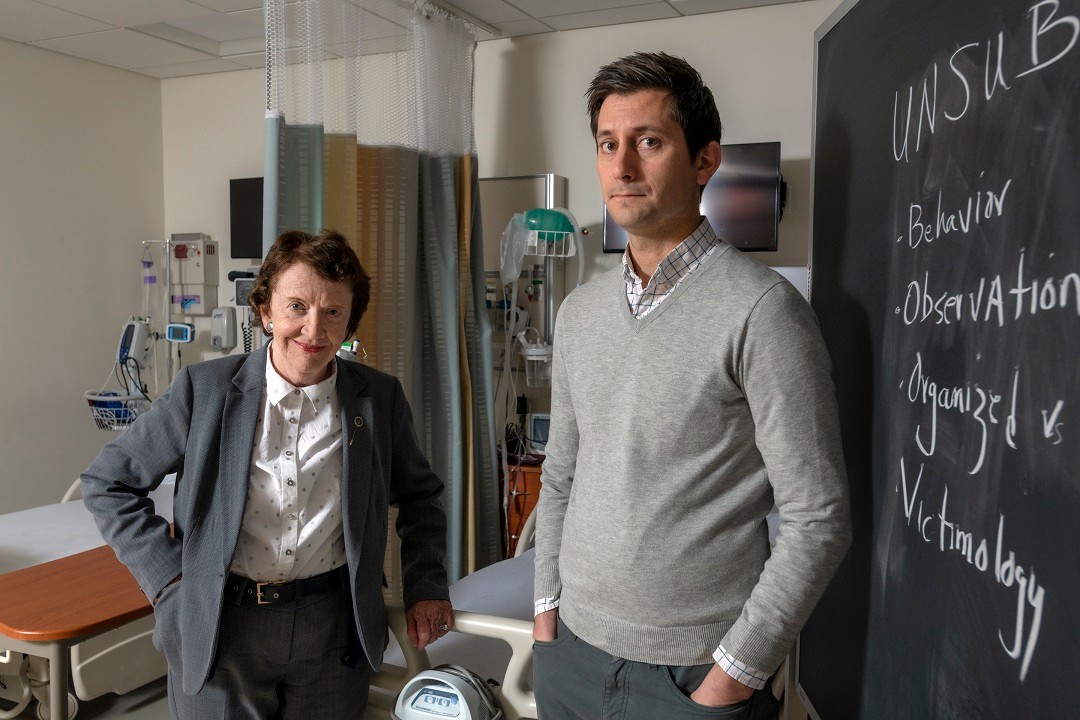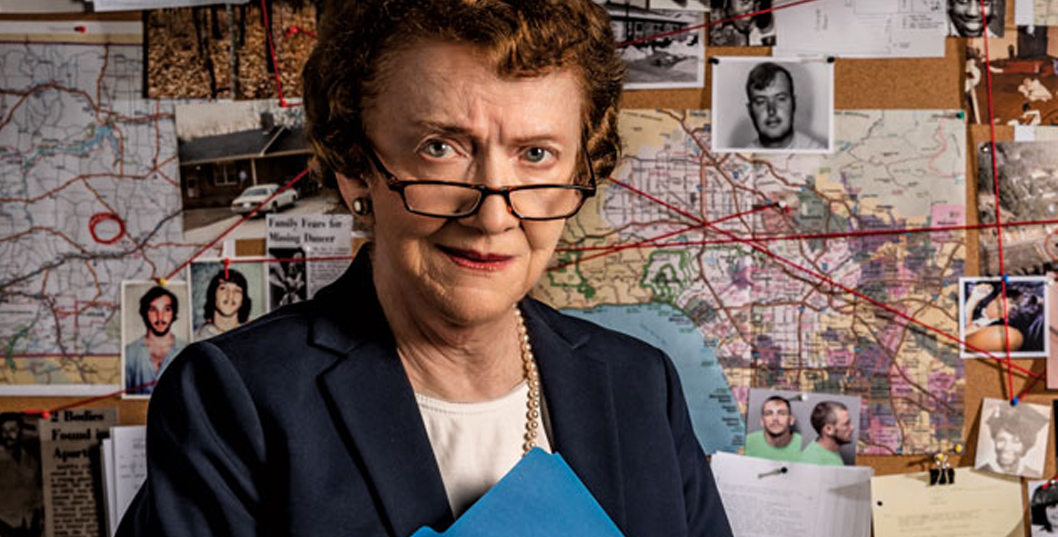Authors Steven Constantine and Ann Burgess. (Photos by Lee Pellegrini)
Connell School of Nursing Professor Ann Wolbert Burgess received a phone call at her Boston College office in 1978 that would alter the course of her career and lead to a seismic shift in the practice of law enforcement.
The call from Roy Hazelwood of the FBI was the beginning of a decades-long collaboration between Burgess and the agency’s nascent Behavioral Science Unit (BSU). Armed with scholarly knowledge of sex crimes, victimology, and criminal psychology, as well as research skills, Burgess worked alongside the agents and helped them to identify, interview, and track down dozens of notoriously violent offenders and serial killers.
Burgess’s role in the evolution of criminal profiling and its application to several serial killer investigations are detailed in the new book, A Killer by Design: Murderers, Mindhunters, and My Quest to Decipher the Criminal Mind, written by Burgess with Steven Matthew Constantine, associate director of marketing and communications at the Connell School.
The book has been released to critical praise, including starred reviews from Library Journal and Publishers Weekly. It was named a “best book of the month” by Amazon, as well.
While A Killer by Design gives readers an insider’s view of the development of criminal profiling, it also offers an equally compelling perspective on Burgess as a trailblazing forensic and psychiatric nurse, whose story partly formed the basis for a popular TV show years later.

It was research Burgess conducted with BC colleague Lynda Lytle Holmstrom, a sociologist, that put Burgess on the FBI’s radar. The pair interviewed nearly 150 victims of rape to understand the emotional and traumatic effects of sexual violence. Their study found that sexual violence was more about power and control than the act of sex—a novel concept in the early 1970s. They also coined the phrase “rape trauma syndrome” to describe the psychological aftereffects of an attack that would often outlast the physical effects. They published their research in journals, and their article, “The Rape Victim in the Emergency Ward” in the American Journal of Nursing, caught the attention of Hazelwood.
Burgess was brought to the FBI Academy in Quantico to give lectures and teach the agents about victimology and violent sex crimes. There she met agents Robert Ressler and John Douglas, who were conducting a side project interviewing 36 serial killers.
As she recalled in her book, the taped interviews they shared with her were “like eavesdropping on the rawest fringes of humanity.” Burgess saw that the agents were onto an approach that could lead to a whole new way of understanding criminal behavior.
“As far as I know, no one’s ever tried to figure out why serial killers kill,” she recalled telling the agents.
Though Burgess found the agents’ project fascinating and the possible implications profound, she said the interviews were “poorly structured and had zero footing in any conventional school of research.” She joined forces with Ressler and Douglas, contributing her knowledge of sex crimes and applying proper research methodology to the project.
A Killer by Design depicts how the team’s criminal personality study then pivoted from abstract research to an investigative tool. Burgess and the agents applied their insights into criminal behavior to an active murder investigation of young teen boys in Nebraska in 1983. The team developed a profile of the likely killer of the unsolved murders, which helped law enforcement officers apprehend the perpetrator, John Joseph Joubert IV. The case received national media attention and was reported on in the Congressional Record.
Burgess said the Joubert case validated the BSU and criminal profiling, which had doubters even within the FBI. “We’d proven that there was value in understanding the criminal mind…to be able to actually use criminal profiling in an active case to hunt down a killer was the most satisfying reward of all,” wrote Burgess.

Professor Ann Burgess and Steven Constantine of the Connell School of Nursing
“That case elevated criminal profiling to a known tool that the FBI could offer local authorities,” said Constantine, who noted that the FBI needs to be invited in by local law enforcement to look at a case. “It snowballed from there as more cases were solved via profiling.”
Burgess, Douglas, and Ressler would write a book titled Sexual Homicide: Patterns and Motives. The trio’s work was the inspiration for the hit Netflix show “Mindhunter,” in which actress Anna Torv played a fictionalized version of Burgess.
Burgess was often the only non-agent and only woman working with the so-called “mindhunters.” She had been told throughout her career that the graphic, violent, disturbing world of sex crimes was no place for her. Discussing a case with Hazelwood in the 1980s, she recounted, “He tried to walk some imaginary line of social decorum while talking to me about extreme acts of violence, regardless of how many times I told him to knock it off.”
“Many of these original profilers had their own books, but very little of that content mentioned Dr. Burgess’s story,” said Constantine, who worked closely with Burgess on a 2018 campus event called “The Minds behind ‘Mindhunter.’” “I thought Dr. Burgess’s story was particularly interesting and needed to be shared.”
Burgess “broke the glass ceiling,” continued Constantine. “She was a pioneer. Her work helped change how law enforcement thought about these cases and it changed how the legal system thought about these cases. It’s the foundation of the modern aspects on how sexual crimes are dealt with. The public understanding of rape—once dismissed as a ‘women’s issue’—has come so far and that’s a testament to Dr. Burgess and her work.”
Burgess’s expertise led to her providing expert testimony in court and being interviewed for true crime podcasts. Her course, Forensic Mental Health, is considered one of the most popular courses on campus.
She is proud of the advancements in the field of forensic nursing, particularly in the establishment of sexual assault nurse examiners who play a critical role in collecting evidence from victims. Her entire career as a nurse and her research on sexual, violent crimes have been about putting the priority on victims, she said—giving victims a voice, destroying myths around rape, and improving the medical, legal, and investigating communities’ interactions with victims.
Burgess continues to work on behalf of victims. She and psychiatric nursing colleagues from Johns Hopkins University and the University of Maryland have formed the “Super Sleuth Club,” meeting monthly via Zoom to try to solve cold cases. They are joined by Greg Cooper, a former FBI profiler who heads the Cold Case Foundation, and other former BSU agents.
Only a little over half of such cases are solved, which means “thousands of cases have never been solved,” according to Burgess, who said that the Super Sleuth Club heard from a woman connected to one of the cold cases they are investigating. The woman was only nine years old when her mother was killed; the murder remains unsolved.
“She was just so grateful that someone is still paying attention to her mother,” said Burgess. “I always wanted to speak for the victim who didn’t survive, because nobody spoke for them.”
Kathleen Sullivan | University Communications | February 2022




